Collapse of the Eighth Continent: Shangri-La Meets Global Capitalism
Madagascar’s graceful society and unique natural wonders developed over thousands of years; it has taken less than a decade to put it all on life support.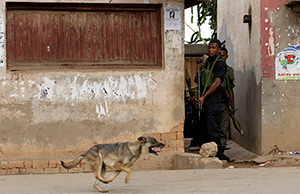
Conway alone submitted to a rich and growing enchantment. It was not so much any individual thing that attracted him as the gradual revelation of elegance, of modest and impeccable taste, of harmony so fragrant that it seemed to gratify the eye without arresting it.
— James Hilton, “Lost Horizon,” 1933
In Madagascar’s capital, there are no traffic lights. Vintage Peugeots buck and sway to the invisible jazz of embouteillage, the French word for traffic, straining up brick-red hills where for centuries Malagasy aristocrats have entombed their ancestors, and where they exhume their bodies every seven years, a ritual that sees death not as an ending, merely as a pause in the conversation.
After a 2009 coup d’etat, Madagascar’s conversation turned to cacophony. The desperately poor thronged the streets of the capital city of Antananarivo. Malnourished women no longer able to breast-feed their children begged money for powdered milk. Selling anything they had, often items as valueless as worn out socks, the poor overflowed the sidewalks. Their abject misery was unmistakable; even more disturbing was the resignation on people’s faces.
“After the coup, there was a decline of any semblance of law and order,” said Pier Larson, a historian at Johns Hopkins University who studies the Indian Ocean nation. “The city was a very orderly city, but it became a latrine. People selling things moved onto the streets. Motorcycles got up on the sidewalks; one guy on a motorcycle hit me as I was walking by. The city was like early 19th or 18th century London.”
On Oct. 25, when a presidential election went off without major incident, Madagascar stepped back from the brink of state failure. The election was hardly a panacea; neither candidate won a clear majority and a runoff is scheduled for Dec. 20. Both men are proxies for former dictators, and if one prevails, some experts say, another coup may be in the cards.
The best-case scenario is that, after a four-year descent into quiet hell, Madagascar has a chance to right itself. It can’t happen too soon: Uranium, gold, nickel and oil exploitation has already begun, including development of heavy oil fields using a technology similar to fracking that creates two or three times the pollution of conventional oil development. And even with a pipeline and port in the planning stages, Madagascar’s oil business is likely to be dwarfed by the development of natural gas. If industry estimates are correct, Madagascar’s offshore gas reserves have been described as enough to power Western Europe for a decade. One industry commentator wrote: “If East Africa is hot, Madagascar is on fire.”
Twenty-first-century globalization is landing with both feet — hard — on an island called “a world out of time.” Between 2001 and 2009, opening Madagascar to the world resulted in much-needed economic growth. But since 2009, the benefits of globalization have been overtaken by the “social failures” described by University of Massachusetts economist Arthur MacEwan: greater income inequality, environmental damage and the decline of democratic control.
|
|
| Photo by Susan Zakin. |
If this sounds disturbingly familiar, think about the definition of globalization: The same forces circle the globe. Cute, furry lemurs may exist only on the world’s fourth-largest island, but Madagascar’s political troubles have proved to be far less unique than its flora and fauna. Madagascar, once a snapshot of the distant past, now looks more like the dystopian future.
***
“Luxe, calme et volupté” — luxury, tranquility and pleasure — is French symbolist poet Charles Baudelaire’s description of Madagascar in his 1857 poem, “L’Invitation au Voyage.” Even now, well-traveled Africa hands get misty-eyed about Madagascar. There’s something different about this nation, and it’s not only the island’s unique plants and animals, even though these are scientifically valuable enough to have made Madagascar a top priority for international conservation organizations for half a century.
Thanks to its isolation and great size, Madagascar is the world’s textbook example of convergent evolution: the phenomenon through which species evolve similar traits by adapting to similar environments or ecological niches, even though they may be only distantly related or completely unrelated. Sometimes called “the eighth continent,” Madagascar has one of the world’s highest rates of endemism, species that exist nowhere else. Madagascar is famous for its 100 species of lemurs, a prosimian that died out elsewhere in the world long ago. But the island also contains 80 percent of the world’s chameleon species, and 10,000 endemic plants. Six of the world’s eight species of baobab tree exist only there, along with 20 of the 25 species of Pachypodium, an enormous spiny plant like an elephant’s trunk, six species of the giant spiny Alluaudia, and the list goes on. In 2011, the World Wildlife Fund reported that 600 new species of plants and animals had been discovered in Madagascar in the previous decade alone.
Apart from the French, who have a special, rather possessive relationship with their former colony, people tend to travel to Madagascar for the lemurs. When they return, they come for the people. Humans came to the island no more than 2,000 years ago, from Indonesia, Burma and Polynesia; these early arrivals were followed by East Africans, Arab slave traders, Indians and, in the 1600s, the French. From these diverse influences, Madagascar’s culture evolved into something delicate yet universal. The central tenet is fihavanana: treat others as you would want to be treated. But the concept goes beyond that. Wikipedia’s definition isn’t bad: “Fihavanana is a Malagasy word encompassing the Malagasy concept of kinship, friendship, goodwill between beings, both physical and spiritual. The literal translation is difficult to capture, as the Malagasy culture applies the concept in unique ways. Its origin is Havana,, meaning kin.”
I arrived in Madagascar in 2001 on a fellowship to train environmental journalists. Initially, I was taken aback by the country’s poverty. After a few days on Île aux Nattes and Île Sainte-Marie, where the semi-mythical pirate state of Libertaria once existed (or perhaps not), I realized that Madagascar had always lived in my mind — if only in negative space. Even as a kid, I’d sensed there was something inhuman in America’s unforgiving hustle. In Madagascar, people behaved with sensitivity. They were attuned to nuance. Money was not the measure of all things; in fact, it barely seemed to exist. I heard the Malagasy proverb “Ny Fihavanana no talohan’ny vola,” which, loosely translated, means “the relationship is more important than the money.”
In Madagascar, colors looked brighter, and the rhythm of life felt fluid. Culture and nature were oddly congruent: The mouse lemur in a nest of branches and the watchman strumming a stringed instrument and singing softly, both tuned to the same refrain under a sky of falling stars. Here, in this country of eroding elegance and sweeping landscape, the parallel world of my imagination turned out to be real.
That Madagascar was real, but like Shangri-La, illusory. Earlier waves of globalization had doomed the elephant birds, 10 feet tall and 800 pounds, sloth lemurs the size of grizzly bears, and pygmy hippos. All were driven to extinction after the arrival of humans.
Humanity itself is just as fragile, if one defines the word as the quality of being humane. Contemporary scholars have criticized the Shangri-La of the 1933 novel “Lost Horizon” as Orientalism, but the book’s dominant theme is the yearning to preserve a sense of humanity in the wake of World War I, even as World War II gathered force on the real horizon outside the confines of James Hilton’s mythical lamasery.
Like “Lost Horizon,” Madagascar’s recent history is a reminder of how quickly a civilization can be destroyed.
***
The Queen’s Palace sits in ruined splendor atop what was once the highest of the 12 hills surrounding Antananarivo. Built for Queen Ranavalona I between 1839 and 1841, the palace and its surrounding structures burned in 1995, days before they were to be inscribed in the list of UNESCO World Heritage sites. The fire was believed to be arson by coastal people revolting against the dominance of the Merina aristocrats of the high plateau. But the palace resisted: The building’s walls, originally constructed of wood, had been encased in stone by a Scottish mason. Like Miss Havisham’s decaying mansion, the shell survived, a still point in Madagascar’s tumultuous politics.Those politics, some scholars say, have been dominated by the island’s feudal aristocracy, families descended from the Indonesians who made their way to the island across 1,500 miles of ocean. Yet for more than 35 years, a canny politician named Didier Ratsiraka, who came not from the high plateau, but from the coast, was the dominant force on the island. Ratsiraka rose to power as a socialist, but when aid dried up from communist countries after the fall of the Berlin Wall, he turned toward the West. In reality, Madagascar had always retained ties with France, a country notoriously reluctant to relinquish interests in its former colonies.
During the Ratsiraka years, Madagascar remained largely isolated from the rest of the world, not unlike North Korea, one of Ratsiraka’s major supporters. “A World Out of Time” was the title guitarists Henry Kaiser and David Lindley gave to their recordings of master Malagasy musicians. Their landmark 1991 CD featured musicians playing instruments unique to Madagascar, sonic equivalents of the island’s rare lemurs and chameleons: the delicate sodina flute and the valiha, a tube zither made of local bamboo. If there was a star, it was D’Gary, who translated the music of Madagascar’s stringed instruments to guitar. In those days, D’Gary’s music was one of the few examples of Western culture reaching the island.
But Madagascar had never been completely isolated; in the 1600s, the island’s French governor put a Francophone stamp on the island’s feudal system. The Arab slave trade of the 1700s left its mark; in the 1800s, after the British ended the trade in the Indian Ocean, Merina aristocrats established an internal slave economy to build their empire.
In 2001, another watershed event changed the island: Antananarivo’s mayor, self-made millionaire Marc Ravalomanana, ran for president. Turning to the U.S. rather than France, he hired crack political operatives recommended by Kurt Schmoke, the first African-American mayor of Baltimore, who had become a friend and mentor during Ravalomanana’s business trips to the U.S. After an 11-month standoff over election results, the upstart Ravalomanana became Madagascar’s president.
Madagascar had already started to embrace a 21st century economy. Construction had begun on the country’s first major industrial development, an $800 million mine controlled by one of the world’s largest mining companies, Rio Tinto Zinc, that could produce 10 percent of the world’s titanium dioxide. The project included a major shipping port near Fort Dauphin on Madagascar’s southeast coast.
|
|
| Photo by Susan Zakin. |
Madagascar was waking from centuries of reverie. After the mine opened, the surf still broke over old shipwrecks, but the sleepy colonial city of Fort Dauphin had been transformed into a boomtown. Prostitution and nightclubs flourished, along with sexually transmitted diseases, although, for reasons that baffle researchers, AIDS did not become prevalent. But few of the company’s promises of jobs, health care and education for local communities materialized.
The country’s new president said all the right things. Partnering with advisers at Harvard University, Ravalomanana launched an economic growth initiative that included establishing incentives for foreign investment, privatization of state industries — and birth control. At the 2003 Durban World Parks Congress, he endeared himself to foreign donors by declaring economic growth and environmental protection inseparable, pledging to protect 10 percent of the country’s land in five years.
Ravalomanana followed through on many of his promises. His administration established health care facilities and primary schools, set aside large tracts of land for conservation, and improved Madagascar’s stunningly decrepit road network. It didn’t hurt that Ravalomanana was fluent in English, which he had learned as a student in Denmark, and startlingly handsome.
Ravalomanana won decisive re-election in 2006. His second-term platform, the Madagascar Action Plan, which set targets for additional development, was lauded as state of the art. By 2008, Madagascar’s economy was booming at 6.3 percent. Critics in Madagascar’s business community complained that the figures were inflated, but the change was undeniable. Late-model Toyotas appeared on the newly paved streets of Antananarivo, along with those bellwethers of modernity: advertising billboards.
Madagascar’s future looked promising, as did Ravalomanana’s. The country’s incipient mining boom was predicted to create as many as 100,000 jobs. The French oil company Total was backing tar sands development in the country’s southwest, and an enormous cadmium and nickel mine run by Canadian company Sherritt International promised to become a major employer. While the Sherritt mine would have an impact on rare and endemic species, by industry standards the company showed concern both for the environment and the need to create jobs for Malagasy workers.
But outside the well-paved capital, discontent was escalating. Only a small percentage of Malagasy people were benefiting from the boom times. Madagascar’s standard of living had been in decline long before Ravalomanana’s presidency. The population had grown exponentially, but the country’s agriculture, primarily slash and burn farming, left vast tracts of land depleted after as little as seven years. In the 1960s, Madagascar had been a net exporter of agricultural products; now the country imported most of its food.
Ravalomanana let the exchange rate for Malagasy currency float, which aided growth but caused inflation to escalate. The cost of living was rising dramatically, not just in Madagascar, but everywhere, and this accentuated the hardships caused by the Malagasy ariary’s precipitous drop in comparison with the euro. As late as 2005, 85 percent of Madagascar’s people were living on less than $2 a day. Much of Madagascar remained untouched by modernity. Child labor was commonplace, with one-fifth of those between the ages of 5 and 14 working, often in dangerous industries such as mining or stone cutting.
By 2008, inflation had reached 27 percent. And something was happening to Ravalomanana. He was a true Horatio Alger. Starting at the age of 5, the Protestant choirboy walked four kilometers to school, often leaving early to sell watercress to train passengers. He subsidized his secondary school studies by selling yogurt in individual serving pots to local villagers and students, an enterprise that grew into Madagascar’s largest food conglomerate.
But Ravalomanana seemed unable to hit the brakes on his ambition. If using his presidency to benefit his companies weren’t enough, he made a sweetheart deal to lease nearly half of Madagascar’s arable land to the South Korean agricultural firm Daewoo for corn and palm oil plantations. In a country where more than half the population consists of small farmers, this further galvanized his opposition, despite the promise of thousands of jobs.
The Daewoo deal was uncommon only in its size and scope. While people in Madagascar are quick to distinguish themselves from the rest of Africa, Ravalomanana was replaying a familiar post-colonial scenario: an autocratic leader cutting deals that have more than a whiff of neocolonialism. Land grabbing, as critics call it, is just the latest iteration, with 986 agriculture deals made since 2000 to lease land in countries such as Ethiopia, Sudan, the Democratic Republic of Congo and Madagascar.
As the furor over the Daewoo deal intensified, Ravalomanana committed the politically tone deaf sin of using international funds to purchase a second multimillion-dollar presidential jet. When he attempted to cut the military budget, street demonstrations broke out in Antananarivo. Ravalomanana’s successor as the capital’s mayor, a 35-year-old former disc jockey and TV station owner named Andry Rajoelina, became the figurehead for an insurgency backed by military leaders. It was widely believed that the military, many members of which had ties to Ratsiraka, were backed by powerful French interests, including the oil company Total. But the tiny handful of foreign reporters in Madagascar who might have broken the story without fear of reprisal never found a paper trail.By then, Ravalomanana had lost the support of the aristocratic families of the Haut Plateau. The Merina high caste had never considered Ravalomanana one of their own; now the word hova, the caste of commoners who engage in business and whose family tombs lie outside the walls of high-caste enclaves, was regularly appended to the president’s name.
“It’s embarrassing to see him on TV,” a prominent woman in the capital complained. “He can’t even speak French properly.”
The increasingly autocratic Ravalomanana had engineered his own downfall, and he brought Madagascar down with him. One of the signs that power had gone to Ravalomanana’s head may seem trivial, but in terms of day-to-day life, it was unmistakable. As mayor, Ravalomanana had spruced up Antananarivo, planting flowers in parks and along road medians, improving trash collection and installing streetlights to combat crime. As president, he went further, ordering owners of the city’s 1960s-vintage Peugeot taxis to paint their vehicles a uniform dull yellow instead of the city’s distinctive candy colors of pink, blue and green.
The swinging jazz of the daily embouteillage slowed to a dirge.
***
In March 2009, after street demonstrations became increasingly violent and tensions continued to escalate, military leaders reportedly persuaded Ravalomanana to resign. Rajoelina, too young to run for president under Madagascar’s constitution, took nominal control of the government in what news agencies called a coup d’etat. The transfer of power was relatively low-key, as coups go: Fewer than 100 people died in the street demonstrations culminating in Ravalomanana’s ouster. Human rights organizations either ignored the events in Madagascar, or gave the situation minimal attention. In the U.S., there was virtually no news coverage.
|
|
| Photo by Susan Zakin. |
“Madagascar’s paradoxical problem is that its culture is essentially nonviolent,” remarked Kevin Doyle, an American who has spent much of his career directing aid and development projects in conflict zones throughout sub-Saharan Africa. Without the grisly narratives that reinforce stereotypes of Africa, Doyle said, the Western world ignores countries like Madagascar.
Over the next four years, Madagascar descended into a state of misery beyond the grasp of most Westerners. Under Rajoelina’s so-called transitional government, Madagascar’s GDP growth fell from 7 percent in 2008 to minus 3.7 percent in 2009. By 2013, the World Bank estimated that 92 percent of Madagascar’s population was living on less than $2 a day, an increase of 10 percent since 2005. In many regions, acute child malnutrition increased by 50 percent. An estimated 600,000 children had to leave school because their families could not pay tuition fees.
With poverty, hunger and desperation on the rise, theft and violent crime increased. The concept of fihavanana became a luxury few could afford. Madagascar’s culture was eroding, both its tradition and its nascent progress.
“These developments put the welfare of future generations at risk,” the World Bank concluded. “At this point, Madagascar will not reach most of the UN Millennium Development Goals (MDG) by 2015, even the ones which in 2007 were deemed potentially achievable (e.g., reducing child mortality, increasing enrollment in primary education, and eradicating extreme poverty).”
To make matters worse, in a move intended to put pressure on Rajoelina to resolve Madagascar’s political crisis, the U.S. and other donors cut off all but humanitarian aid. Foreign aid totaling roughly $400 million had accounted for approximately 40 percent of the government’s budget and 75 percent of investments in public spending.
Madagascar’s textile industry had been thriving, partly because of the African Growth and Opportunity Act, which enables African governments to access the U.S. market without paying duty if they show a commitment to democracy. When the Obama administration suspended the agreement, 50,000 workers in factories that made clothes for the U.S. market lost their jobs.
News coverage, such as it was, fixated on negotiations between the four heads of state. The poverty, misery and death of Madagascar’s people received little attention. The few articles that appeared in the U.S. were investigations of corrupt military leaders profiting from illegal logging of rosewood trees from national parks and conservation areas. While the logging destroyed habitat for the silky Sifaka lemur, one of the world 25 most endangered species, the real story was much larger.
One longtime resident noticed the intensifying of a perennial problem that had left Madagascar with less than 5 percent of its original landscape: the destruction of forests for slash and burn agriculture. She charted the dissolution of Madagascar’s civil society by the billowing smoke on the road from the capital to her home. From 2004 to 2008, when Ravalomanana was in office, the sky was clear. By 2010, the horizon was dense with yellow smoke from burning trees. “It was horrific,” she said.
Richard Marcus, who heads the Global Studies Institute at Cal State Long Beach, has consulted for the United Nations and the World Bank and recently wrote a book on Madagascar. He believes the country’s crisis was prolonged by a series of missteps by Western nations, as well as the donor community’s bureaucratic self-interest.
“In 2009 suddenly donors were talking about reputational risk,” Marcus said. “The World Bank had invested a significant amount in Madagascar since 2002 and they thought: ‘Are we going to lose face here?’ ”
Ultimately, the decision was to work through the Southern Africa Development Community to negotiate an agreement among Ravalomanana, Rajoelina, former President Albert Zafy and the aging lion of Madagascar politics, Ratsiraka. As successive rounds of negotiations failed, Madagascar’s suffering deepened; a meanness of spirit crept in, and the culture of mild complaint that had been ubiquitous during the Ratsiraka years turned to hopelessness and anger.
“The four heads of state approach showed a lack of knowledge about Madagascar,” Marcus said. “The assumption that the four of them represented Malagasy society was just incorrect. The talks left all the other players out of the process, including 150 political parties and organizations that were promoting a stronger civil society.”
He believes that the underlying premise of the talks — that Madagascar remained, at bottom, a feudal aristocracy — was outdated. “It used to be essential to woo the big Merina families in the capital,” he said. “But Ravalomanana is not from that caste. Rajoelina is also not from that caste. The idea that there is an important business class that is nouveau riche came about in the 1990s and was even more prevalent in the early 2000s. The old families are important, but not as important.”
What remains from Madagascar’s feudalism is a tale of rivalry and revenge straight outta Shakespeare: Ratsiraka, from his comfortable exile in France, threw his support behind Rajoelina, reportedly still furious over his defeat by Ravalomanana. By normal standards, Ratsiraka was a war criminal. Substantial documentation existed that his guard had opened fire on demonstrators in 1991. In 2003, he was convicted of stealing from Madagascar’s central bank. Ratsiraka had come to power after the assassination of Madagascar’s only political hero, Richard Ratsimandrava. Shot under mysterious circumstances only six days after assuming the presidency in 1975, Ratsimandrava wanted to restore Madagascar’s tradition of village democracy. He is still called the Malagasy John F. Kennedy, and rumors still circulate that Ratsiraka was involved in his assassination.
Ratsiraka consolidated his power not only by punishing his enemies, but by incrementally restructuring Madagascar’s constitution and stacking the courts. But he was only the first in a succession of leaders who followed the same script. After winning election as an anti-corruption crusader, Ravalomanana was accused of using his presidency to establish monopolies for his companies, as well as avoiding taxes. But like Ratsiraka, he was careful to act within the law, simply changing laws and regulations when it suited him. Rajoelina, by taking power in a coup, stepped outside the law, but he was merely taking the process to its logical conclusion.There were no heroes at the peace talks. Ravalomanana had been sentenced to life imprisonment for ordering his guard to open fire on demonstrators, killing 30. The international community considered the trial politically motivated — Ravalomanana himself called it “a mock trial” — but in the end, Ravalomanana agreed not to run for president. Instead, his wife Lalao would be a candidate. Neither Ratsiraka nor Ravalomanana ever acknowledged wrongdoing.
Eventually all of the past players — including Lalao Ravalomanana — were barred from running for president. The election took place without major incident on Oct. 25.
***
After the votes were counted, political scientist Marcus sounded not quite euphoric, but relieved. “It isn’t democracy, but it’s a step,” he said. “You have a surprising moment right now that no one would have fully anticipated. The two parties tired themselves out and were edged out of the process. Personally, I feel they should disappear from the planet.”
Inside Madagascar, people were less sanguine, invoking the phrase plus ça change, plus c’est la même chose (the more it changes, the more it’s the same). The two leading candidates had ties to Ravalomanana and Rajoelina. On the campaign trail, front-runner Jean-Louis Robinson — a doctor who served as minister of health in Ravalomanana’s administration — had repeatedly promised to appoint Lalao as prime minister.
Robinson won 21 percent of the votes — a comfortable lead in a field of more than 100 candidates — but under Malagasy law, short of the 50 percent needed to avoid a runoff election, which will be held Dec. 20. In the event of an upset, there is talk that his opponent, Hery Rajaonarimampianina, will name coup leader Rajoelina as prime minister.
“It was a mistake by the international community to allow people like who took part in the transition government — who were never elected and were tied to coup leaders — to run for president,” said a prominent Malagasy business leader. “It’s led by France. They just want an election and to get back to business. They don’t care how it happens.”
It remains to be seen whether the Dec. 20 runoff election means business as usual, or another coup.
***
Madagascar’s democratic tradition has been described as “paper thin” even by comparison with other African countries, where democracy is also a recent phenomenon. This became apparent in the election of 2001, when Ravalomanana either won 46.6 percent, 50.5 percent or 52 percent, depending on whether you listened to the National Electoral Commission and the Ministry of Interior, controlled by Ratsiraka, or international election observers. The election devolved into a stalemate when Ravalomanana refused to participate in a runoff because the vote count would be overseen by the same officials hand-picked by Ratsiraka.
Months passed as the two candidates battled, crippling the country. This was 2001. In September, the World Trade Centers fell to terrorist attack, killing 3,000. The New York Times profiled 2,500 of the victims in a series called “Portraits of Grief.” The most common ZIP code was 10021, the affluent Upper East Side of Manhattan.
Over the following months, as American reporters labored over profiles of accountants and bond traders, an estimated 7,500 Malagasy children died of malnutrition and preventable diseases because Ratsiraka was blocking roads to the capital, which was held by Ravalomanana. Other than their families and friends, nobody will ever know these children’s names.
Ravalomanana looked like the future. Then-Secretary of State Colin Powell and National Security Adviser Condoleezza Rice were reportedly split on the issue of a runoff election, with Rice urging a quick resolution to the crisis by recognizing Ravalomanana. As summer approached, the U.S. threw its support behind Ravalomanana. Madagascar’s Horatio Alger was sworn in as president. On June 26, 2002, a letter of congratulations from President George W. Bush was presented to Ravalomanana, making the U.S. the first country to recognize him as Madagascar’s leader. History had turned a page. Madagascar’s feudal aristocracy had been supplanted by the self-made man pledging to bring Madagascar into the free market.
|
|
| Photo by Susan Zakin. |
After this fall’s almost-democratic election, once again the magic world “election” will restore Western aid: The World Bank budget for Madagascar in 2013 has already been announced — $167 million.
Perhaps it will be enough.
***
In 2006, at the behest of then-President Ravalomanana, workers restored the ruins of the Queen’s Palace. By 2008, the interior had been rebuilt, using cement to withstand the ravages of time and political unrest. The partially restored structure was opened to the public, but closed soon afterward so work could resume.
It never did. After the coup d’etat, work on the palace halted. Left alone on its hill, Queen Ranavalona’s palace watched over the city.
It is worth noting that Queen Ranavalona was no mere figurehead. Ruling from 1828 until her death in 1861, she resisted foreign exploitation of the island’s resources, raised a standing army of 20,000, and expanded her empire, often using forced labor. She also preached, unsuccessfully, against the environmentally destructive practice of slash and burn farming.
Until recently, historians regarded her as a tyrant, and some called her insane. More recently, they have recast her as a leader protecting her people from European colonial domination.
This year, the election’s female candidates evoked a thin thread of hope, even among the capital’s cynics. Saraha Rabearisoa, a 43-year-old ecologist, was considered the most credible candidate. She founded the country’s green party, which has a grass-roots organization strong enough to make it a contender in upcoming parliamentary elections. The second largest vote-getter among the women, Brigitte Rabemanantsoa is a medical doctor, and a former president of the Association of Madagascar’s Female Mayors who has been lauded for her managerial skills. A third candidate, Roseline Emma Rasolovoahangy, was barred from running because she had not spent enough time in the country. But Rasolovoahangy is unlikely to give up: A geophysicist and energy entrepreneur with a Ph.D. from Stanford, she once captained Madagascar’s women’s national basketball team.Madagascar’s graceful society developed over thousands of years; it has taken less than a decade to put it on life support. The destructiveness of the country’s political deadlock after a decade of peace and economic growth is a reminder that nations can rise and fall with startling speed. Perhaps it begins with a change to an obscure rule — Ratsiraka’s alterations to Madagascar’s constitution, or, in the U.S., the resolution rammed through by the Republicans on Oct. 1 that made it impossible for anyone but Speaker of the House John Boehner or his designee to offer a motion to reopen the government.
Differences remain, of course, but a YouTube video posted by Rep. Chris Van Hollen, D-Md., has a disturbingly familiar ring.
“Why were the rules rigged to keep the government shut down?” asks Van Hollen.
“The gentleman will suspend,” interrupts Jason Chaffetz, the Utah Republican presiding on behalf of Boehner.
“Democracy has been suspended,” Van Hollen retorted.
***
Johns Hopkins historian Larson, who has spent more time in Madagascar than most Westerners, sees the country’s problems not as relics of feudalism or a dark continent, but as emblematic of the postmodern, globalized world. While cultures remain distinct, although less so than before, the forces pushing on them are global in nature.
“Obviously, Madagascar has history of coup d’etats, or popular uprisings,” Larson said. “A lot of changes haven’t been done according to the ballot box. So it’s not surprising that people who have power and influence attempt to exercise it.
“But the difficulty with bringing new people into leadership positions and the fact that the military eats a lot of the national budget, these are problems not unique to Madagascar. Look at the Clintons and the Bushes.”
If globalization results in greater income inequality, environmental damage and the decline of democratic control, as economists have noted, what can Madagascar tell us about the rest of the world, I asked Larson.
“Things can change very quickly,” he said. “Who would have predicted that Ethiopia would become one of the fastest-growing economies in the world? This may be slightly dramatic, but what if the U.S. comes to a complete political impasse, and there’s no way out? What happens when you have a population completely disgusted with all the political figures? That’s a population ripe to support a coup d’etat.
“I’m an historian,” Larson continued. “I teach about the distant past. You see the rise and fall of states. They last 200 years, or 300. None of them last a thousand years.”
“There is only one valley of Blue Moon, and those who expect to find another are asking too much of nature.”
— “Lost Horizon”
Your support matters…Independent journalism is under threat and overshadowed by heavily funded mainstream media.
You can help level the playing field. Become a member.
Your tax-deductible contribution keeps us digging beneath the headlines to give you thought-provoking, investigative reporting and analysis that unearths what's really happening- without compromise.
Give today to support our courageous, independent journalists.
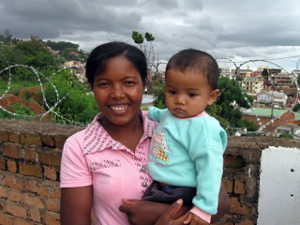
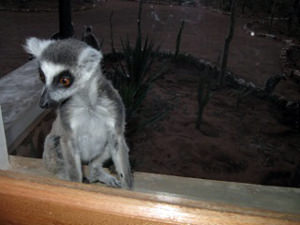
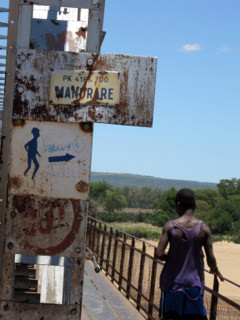
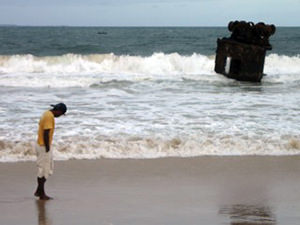

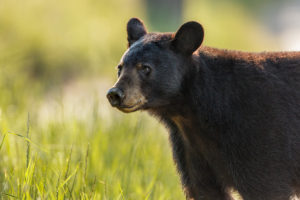
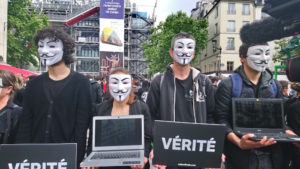

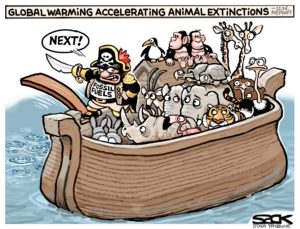
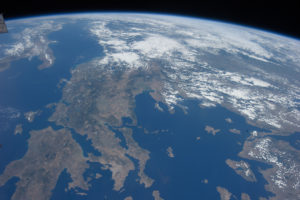
You need to be a supporter to comment.
There are currently no responses to this article.
Be the first to respond.